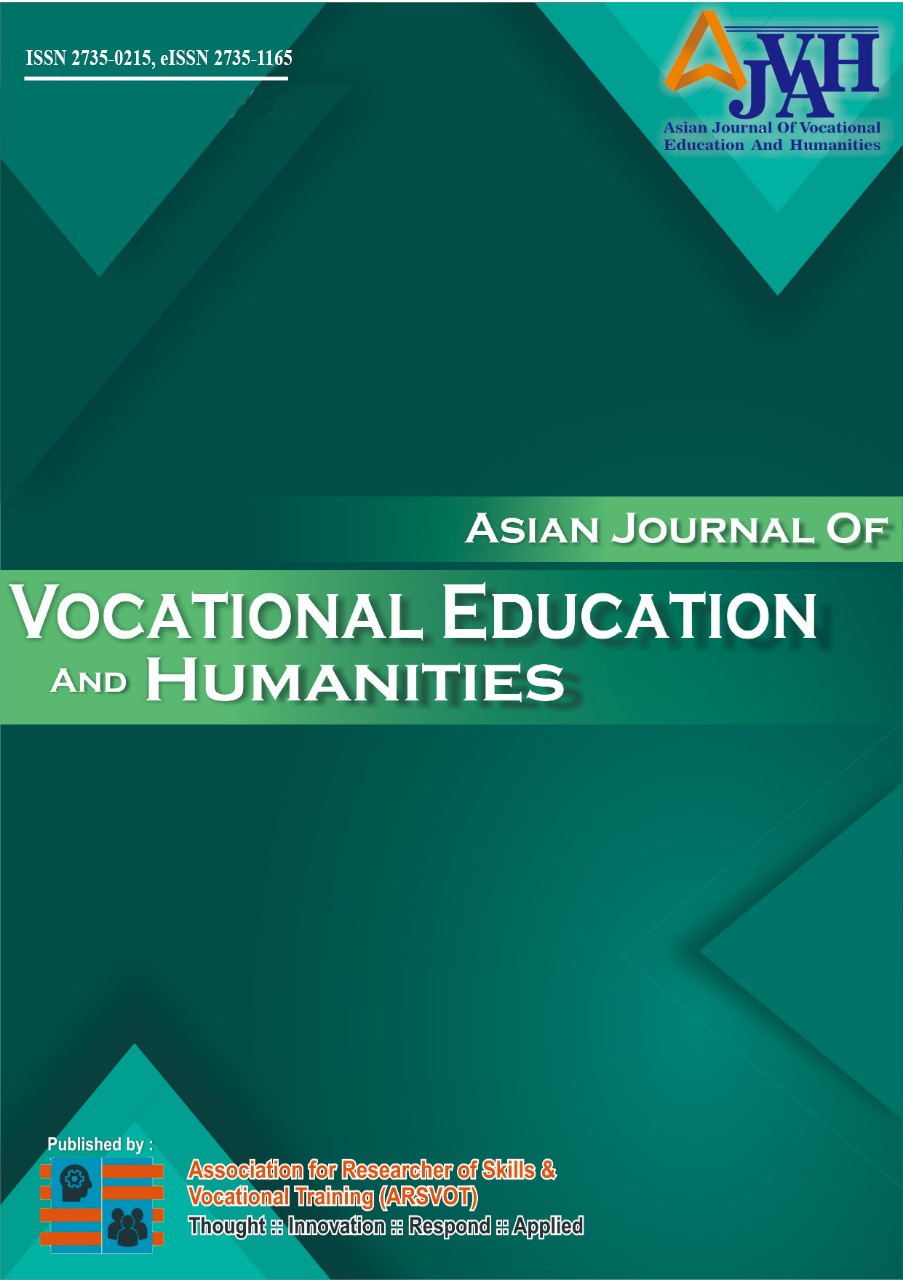Development of a Multi-CartClimb for Automotive Technology Students at Vocational Colleges
DOI:
https://doi.org/10.53797/ajvah.v6i2.6.2025%20Keywords:
Multi-CartClimb, technical innovation, vocational education, product design, workshop safety, ergonomicsAbstract
This study focuses on the development and evaluation of an innovative product named Multi-CartClimb, a multifunctional piece of equipment that integrates the functions of a trolley and a ladder. Designed specifically for students in the Automotive Technology workshop at Kolej Vokasional Sungai Buloh, its primary aim is to enhance work efficiency, improve user safety, and optimize space utilization in limited technical workshop environments. The development process followed a user-centered design approach, incorporating needs analysis, prototype construction, and performance evaluation through hands-on testing and in-depth feedback sessions with students and instructors. Qualitative findings from expert interviews and user feedback indicate that the Multi-CartClimb effectively streamlines workshop tasks by combining two essential tools into a single unit, reducing workflow interruptions and improving workspace organization. Respondents consistently noted its suitability for vocational workshop settings, with particular appreciation for its compact, foldable design and potential as an educational tool for teaching engineering design, innovation, and problem-solving. The product was also perceived to enhance safety by reducing the risks associated with unstable ladders and the separate handling of heavy trolleys. However, several areas for improvement emerged from user experiences, including the product’s weight, handle ergonomics, and stability on uneven surfaces. Recommendations include the adoption of lighter yet durable materials, the introduction of an adjustable handle for improved ergonomics, and enhancements to the wheel-locking and anti-slip features. Overall, the Multi-CartClimb demonstrates strong potential not only as a practical workshop solution but also as a valuable teaching aid that supports project-based learning and fosters technical innovation among vocational students.
Downloads
References
Ali, M. F., & Hassan, M. N. (2021). Inovasi dalam Pendidikan Vokasional dan Latihan Teknikal (TVET). Kuala Lumpur: Dewan Bahasa dan Pustaka.
Aziz, A. A., & Kamarudin, H. (2022). The application of design thinking in vocational education: A case study in automotive workshop training. Journal of Technical Education and Training, 14(1), 33–42. https://doi.org/10.30880/jtet.2022.14.01.004
Ghazali, R., & Nordin, M. S. (2020). Penggunaan projek berasaskan reka bentuk dalam meningkatkan kemahiran abad ke-21 pelajar TVET. Jurnal Pendidikan Teknikal dan Vokasional Malaysia, 10(2), 25–38.
Ibrahim, R., & Yahya, S. (2019). Safety awareness and practices among vocational students in automotive workshops. International Journal of Education and Training, 5(2), 41–55.
Mohd Nor, M. H., & Salleh, K. M. (2018). Development of multi-purpose learning tools to enhance TVET learning. Journal of Engineering Science and Technology, Special Issue on TVET, 12–20.
Shariff, S. A. M., & Jaafar, N. (2021). Rekabentuk peralatan bengkel automotif berasaskan ergonomik. Malaysian Journal of Industrial Technology, 6(1), 50–59.
Sharma, S., & Kumar, R. (2020). Application of ergonomic principles in tool design: A review. International Journal of Engineering Research & Technology (IJERT), 9(9), 288–293.
UNESCO-UNEVOC. (2020). Promoting innovation in technical and vocational education and training (TVET). https://unevoc.unesco.org/pub/promoting_innovation_tvet.pdf
Zamri, N. M., & Yusof, S. M. (2017). Integrating design and function in product development for educational innovation. Procedia Engineering, 184, 626–633. https://doi.org/10.1016/j.proeng.2017.04.136
Downloads
Published
How to Cite
Issue
Section
License
Copyright (c) 2025 Amirul Aiman Jefferi, Nur Afiqah Farhanah Mohd Hisham, Nur Fatin Hazwani Megat Aruki, Azrulhisham Marjuni, Siti Nor Azwa Samsuddin, Mohamad Amiruddin Ismail

This work is licensed under a Creative Commons Attribution-NonCommercial-ShareAlike 4.0 International License.


